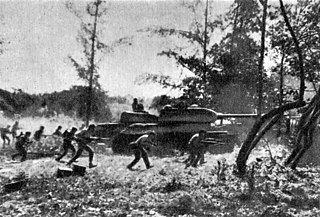
The Bay of Pigs Invasion was a failed military landing operation on the southwestern coast of Cuba in 1961 by Cuban Democratic Revolutionary Front (DRF), consisting of Cuban exiles who opposed Fidel Castro's Cuban Revolution, covertly financed and directed by the U.S. government. The operation took place at the height of the Cold War, and its failure influenced relations between Cuba, the United States, and the Soviet Union.
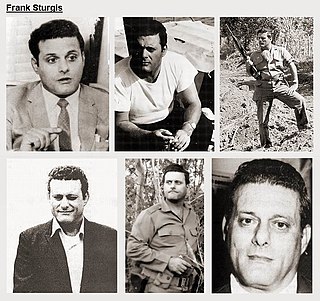
Frank Anthony Sturgis, born Frank Angelo Fiorini, was one of the five Watergate burglars whose capture led to the end of the presidency of Richard Nixon.
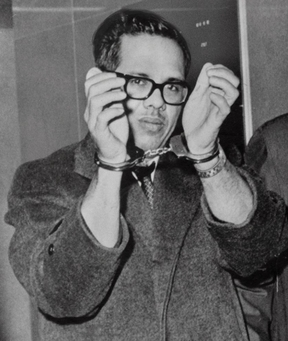
Orlando Bosch Ávila was a Cuban exile militant, who headed the Coordination of United Revolutionary Organizations (CORU), described by the United States Federal Bureau of Investigation as a terrorist organization. Born in Cuba, Bosch attended medical school at the University of Havana, where he befriended Fidel Castro. He worked as a doctor in Santa Clara Province in the 1950s, but moved to Miami in 1960 after he stopped supporting the Cuban Revolution.
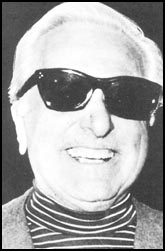
John"Handsome Johnny"Roselli, sometimes spelled Rosselli, was a mobster for the Chicago Outfit who helped that organization exert influence over Hollywood and the Las Vegas Strip. Roselli was recruited by the Central Intelligence Agency (CIA) in a plot to assassinate Cuban leader Fidel Castro.

The Cuban Project, also known as Operation Mongoose, was an extensive campaign of terrorist attacks against civilians, and covert operations, carried out by the U.S. Central Intelligence Agency in Cuba. It was officially authorized on November 30, 1961 by U.S. President John F. Kennedy. The name "Operation Mongoose" was agreed to at a White House meeting on November 4, 1961.
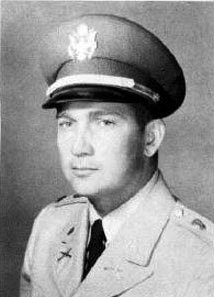
Luis Clemente Posada Carriles was a Cuban exile militant and Central Intelligence Agency (CIA) agent. He was considered a terrorist by the United States' Federal Bureau of Investigation (FBI) and the Government of Cuba, among others.

Cubana de Aviación Flight 455 was a Cuban flight from Barbados to Jamaica that was brought down on 6 October 1976 by a terrorist bomb attack. All 73 people on board the Douglas DC-8 aircraft were killed after two time bombs went off and the plane crashed into the sea. The crash killed every member of the Cuban national fencing team.
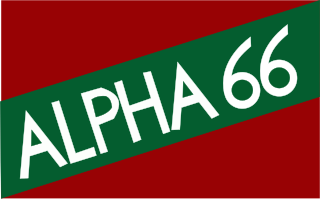
Alpha 66 is an anti-Castro paramilitary organization. The group was originally formed by Cuban exiles in the early 1960s and was most active in the late 1970s and 1980s. Its activities declined in the 1980s.
The Coordination of United Revolutionary Organizations was a militant group responsible for a number of terrorist activities directed at the Cuban government of Fidel Castro. It was founded by a group that included Orlando Bosch and Luis Posada Carriles, both of whom worked with the CIA at various times, and was composed chiefly of Cuban exiles opposed to the Castro government. It was formed in 1976 as an umbrella group for a number of anti-Castro militant groups. Its activities included a number of bombings and assassinations, including the killing of human-rights activist Orlando Letelier in Washington, D.C., and the bombing of Cubana Flight 455 which killed 73 people.
Operation 40 was the code name for a Central Intelligence Agency-sponsored counterintelligence group composed of Cuban exiles. The group was formed to seize control of the Cuban government after the Bay of Pigs Invasion. Operation 40 continued to operate unofficially until disbanded in 1970 due to allegations that an aircraft that was carrying cocaine and heroin in support of the group crashed in California.
Juana de la Caridad "Juanita" Castro Ruz was a Cuban-American activist and writer, as well as the sister of Fidel and Raúl, both former presidents of Cuba, and Ramón, a key figure of the Cuban Revolution. After collaborating with the Central Intelligence Agency in Cuba in 1964, she lived in the United States until her death.

638 Ways to Kill Castro is a Channel 4 documentary film, broadcast in the United Kingdom on 28 November 2006, which tells the story of some of the numerous attempts of the Central Intelligence Agency to kill Cuba's leader Fidel Castro. It was directed by Dollan Cannell.

On 21 September 1976, Orlando Letelier, a leading opponent of Chilean dictator Augusto Pinochet, was assassinated by car bombing, in Washington, D.C. Letelier, who was living in exile in the United States, was killed along with his work colleague Ronni Karpen Moffitt, who was in the car with her husband Michael. The assassination was carried out by agents of the Chilean secret police (DINA), and was one among many carried out as part of Operation Condor. Declassified U.S. intelligence documents confirm that Pinochet directly ordered the killing.

Manuel Antonio de Varona y Loredo was a Cuban lawyer and politician.
Cuban Power, also known as El Poder Cubano or United Cuban Power was an anti-Castro terrorist group that conducted bombings against Cuban targets and states and entities they felt to be sympathetic to the Castro regime through early and mid-1968.

The United States' Central Intelligence Agency (CIA) made numerous unsuccessful attempts to assassinate Cuban leader Fidel Castro. There were also attempts by Cuban exiles, sometimes in cooperation with the CIA. The 1975 Church Committee claimed eight proven CIA assassination attempts between 1960 and 1965. In 1976, President Gerald Ford issued an Executive Order banning political assassinations. In 2006, Fabián Escalante, former chief of Cuba's counterintelligence, stated that there had been 634 assassination schemes or attempts. The last known plot to assassinate Castro was by Cuban exiles in 2000.
The Directorio Revolucionario Estudiantil was a Cuban student activist group launched in opposition to Fidel Castro in 1960, based at the United States, where it soon developed links with the Central Intelligence Agency. In August 1962 it carried out an attack on a beachfront Havana hotel. As of 1963, it was the largest anti-Castro student group in Miami; it also had a chapter in New Orleans, where it had contact with Lee Harvey Oswald in mid-1963. Immediately after the November 22, 1963 assassination of John F. Kennedy, it launched a campaign asserting that Lee Harvey Oswald had been acting on behalf of the Cuban government. The group lost its CIA support in December 1966.
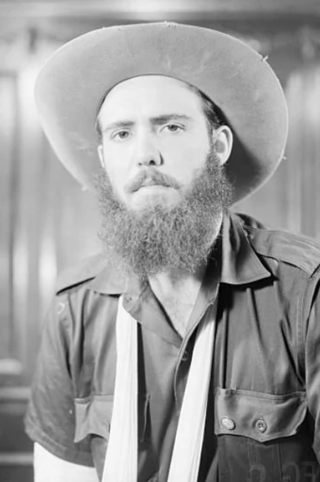
Rolando Cubela Secades was a Cuban revolutionary leader who played a vital part in the Cuban Revolution, having been a founding member of the Directorio Revolucionario Estudiantil and later the military leader of the DRE's Escambray Mountain front, achieving the rank of Commander, the highest military rank in the Revolutionary Army. After the Revolution succeeded in 1959, Cubela became Cuba's envoy to UNESCO. Under the cryptonym AM/LASH, Cubela became "an important asset" of the Central Intelligence Agency, and worked with them on plots to assassinate Fidel Castro. In 1966, Cubela was arrested for plotting the assassination of Castro, and sentenced to 25 years in prison. Released in 1979, he went into exile in Spain.
The United States has at various times in recent history provided support to terrorist and paramilitary organizations around the world. It has also provided assistance to numerous authoritarian regimes that have used state terrorism as a tool of repression.
Ricardo Morales Navarette, also known by the moniker "El Mono", was a Cuban exile and agent of the United States Central Intelligence Agency. He also worked for the DISIP, or Venezuelan intelligence service, and as an informant for the US Federal Bureau of Investigation, Central Intelligence Agency, and Drug Enforcement Administration.













